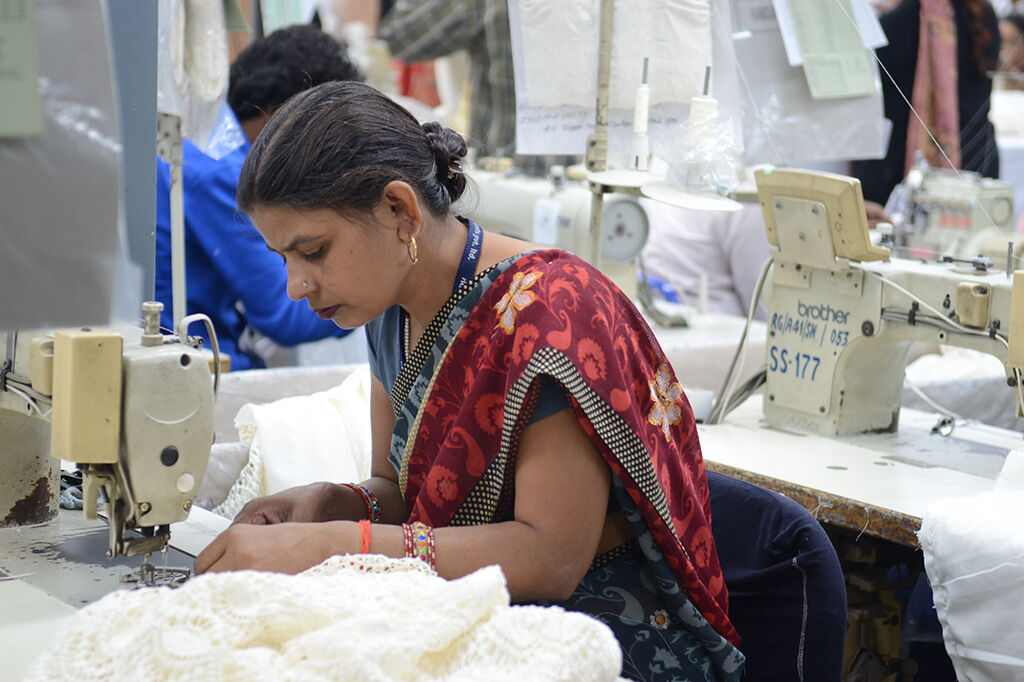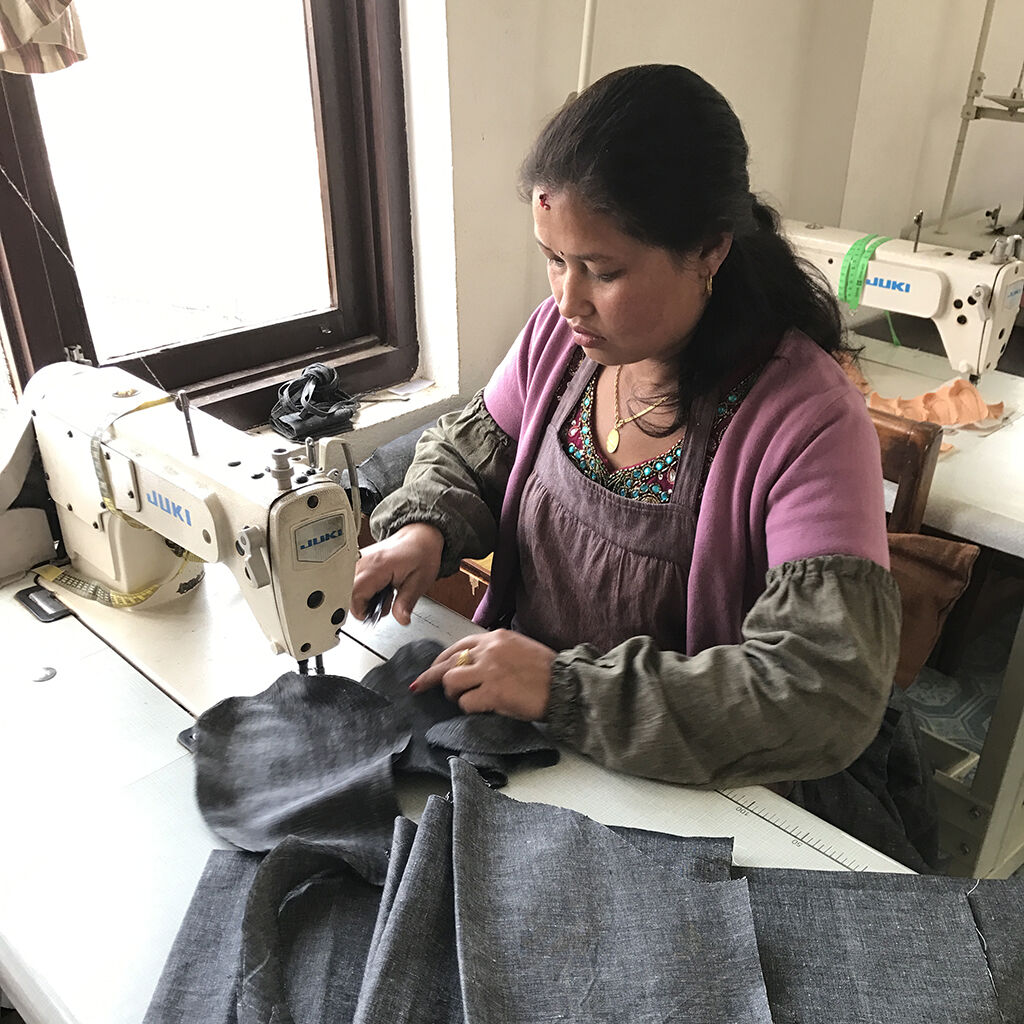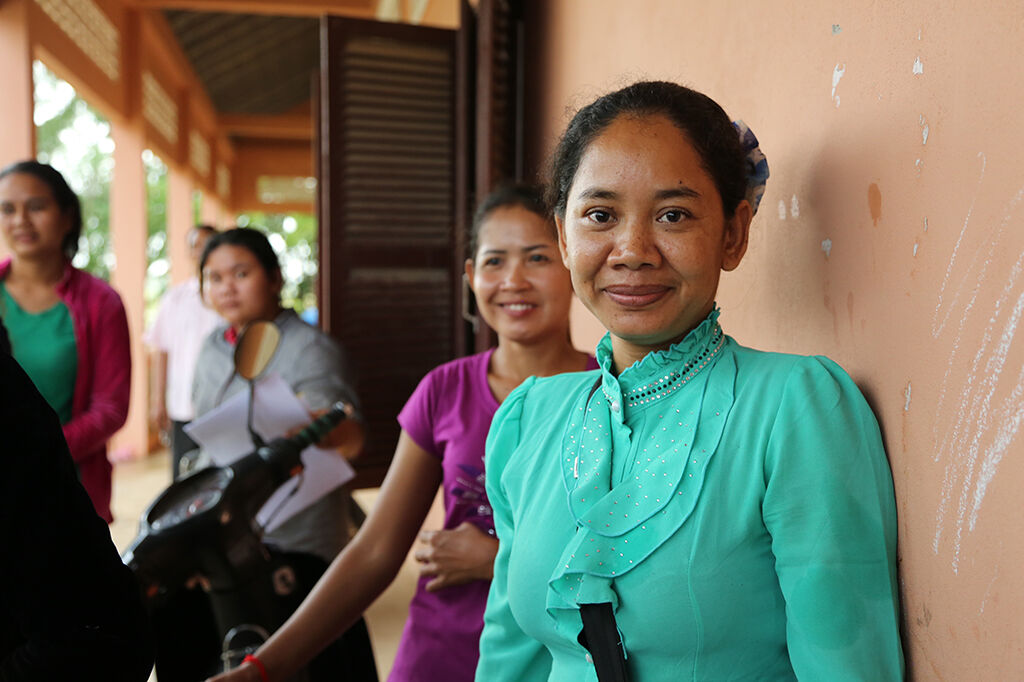Emblazoned on the fronts of popular graphic tees are the familiar slogans: The future is female, Girl Power, Feminist, and the list goes on. Too often, these positive messages directly contradict the values and practices of their own supply chains. Despite the fact that women are the majority of makers and consumers of clothing, the fashion industry serves as grounds upon which gender discrimination has festered since its inception. One in six individuals who are employed work in the fashion industry, and 80 percent of garment workers are female. On the consumer side, millennial women spend more on clothing per year than their male counterparts. Yet, throughout the supply chain, it’s rare to see women in positions of power, whether at the C-suite level or in managerial positions within the factory system.
Fashion, especially fast fashion, at its very core, is much more than an environmental issue — it is an urgent and crucial women’s issue that we must address.
All images courtesy of Remake.
Fashion’s Perpetual Cycle
Over the last few decades, clothing production has doubled. Looking at the vicious cycle of the fashion industry, it’s not hard to see why. By our cultural standards, the act of ‘outfit repetition’ is a near sin, only absolved by partaking in retail therapy. In Britain, one-third of 2,000 women surveyed believed that clothes are old after wearing them one or two times. The fashion industry perpetuates and thrives off of these feelings of inadequacy and churns out new styles in as little as two weeks.
Social media, constantly making us aware of the latest fads, compounds these feelings of inadequacy. Distracted and distanced from the production process of our clothes, we are lured to purchase cheap products that are only made to last a few runs in the washing machine before threads fray and fabrics shrink. And the vicious cycle of fast fashion carries on, in our feeds, in our closets and, more quickly, in our landfills.
And it takes a hefty toll on the garment workers behind the label.

The Lives Behind Your Label
In an interview with Remake, one worker from Mexico, Olivia, says, “I think that the main problem of the factory is that they just see us as objects that produce; Not like women, not like mothers, not like sisters, not like daughters. They see us simply as the cheap labor.”
Many of the cheap, trendy clothes collecting dust in the depths of our closets are produced by the systemic exploitation and abuse of the female garment worker. Beyond the environmental damages incurred through acts of pollution and waste (roughly 200 million pounds of clothing end up in New York City’s landfill sites a year), the cheap price tags come at another great cost to humanity. The women and girls hidden in those supply chains rely on low-paying factory positions and suffer labor abuses in order to make some semblance of a living.
In Ethiopia, garment workers earn a mere 888 Birr (approximately $26 USD) per month. In Bangladesh, where the majority of production takes place, garment workers make 3000 Taka (approximately $35 USD) per month. How can women free themselves from poverty, provide for their families, gain independence, or obtain an education for their children in an industry that treats them as slaves?
How can women free themselves from poverty, provide for their families, gain independence, or obtain an education for their children in an industry that treats them as slaves?
On top of this, it is not uncommon for garment workers to work 60 hours per week or more in extremely hazardous conditions, with factory buildings violating safety regulations, experiencing gender, age, and pregnancy-based discrimination from factory management. Day in and day out, there are young women and girls waking at 5am to endure days of long and intense labor for little to no pay. In an anonymous 2013 interview with CBS, a Bangladeshi garment worker makes a disturbing comment about her work conditions, saying, “When we make a mistake, at least the supervisors don’t beat us like they used to.” Physical abuse is all too common. Unfortunately, injuries throughout garment factories are plentiful, especially in cases of brutal abuse and treacherous working conditions.
Many women and girls remain in these situations because they feel they have no other choice. In an interview, Rubina, a garment worker in Pakistan, explains, “If our family were not in such a bad financial spot, I would not come back, but we do what we have to—so here I am several years later.”
In the most hazardous factories, emergency escapes and basic safety precautions are nonexistent. In many garment factories that employ over a thousand women, emergency exits are blocked by merchandise and fire extinguishers are absent. Less than a decade ago, in the wake of hefty structural violations, the Rana Plaza garment factory collapsed, killing over 1,132 women and injuring at least 2,500; unsurprisingly those injured were improperly compensated. This was not an isolated incident. Take the garment factory fires in Karachi and Lahore, Pakistan for instance. All doors and emergency exits were reportedly closed and locked; this is often done to ensure workers don’t leave prior to the end of their shifts. Subsequently, these factory fires killed more than 300 people and injured at least 600 others.
A few seamstresses who were working at Rana Plaza when it collapsed are reported to have tried to talk to a manager about their concerns with the building’s structural integrity shortly before it crumbled. Those concerns were brushed off. Despite the fact that women are closest to the work and do most of the hard labor, access to positions of power and opportunities to have their voices heard are not the norm.

Sexism Doesn’t Stop in the Factories
Beyond production, gender inequality permeates the fashion industry into the corporate sector. A majority of fashion and retail employees are women, and they make up to 80% of all fashion purchasing decisions. However, just 12.5% of fashion CEOs are women. How is it that an industry upheld by women is controlled by men? A lack of education or expertise is not the problem here. Nearly 100 percent of women in fashion see gender inequality as an issue whereas only 50 percent of men do.
Gender inequality remains ubiquitous at C-Suite levels. Female opinions are ignored at the executive level, despite how they represent and understand the companies’ target audience. Women are the industry’s labor force, prime consumers, and target market. Men, however, are the industry’s top executives, the money-makers, and ultimately, the most powerful.

Changing the Narrative
We can alter our practices as consumers to positively change the trajectory of the fashion industry and, most importantly, the lives of the women who make the clothes behind the scenes. First, consumers can reward positive behavior in the industry. By spending money on fashion brands that provide living wages, support their female labor force, and consciously focus on environmental sustainability, our purchasing power will encourage other companies to follow suit.
Another good practice, aside from caring for your existing clothing as long as possible, is to buy secondhand and vintage clothing from thrift stores or apps like Depop and ThredUp.
Together, let’s demand better for the women who make our clothes.
Learn more about how you can make fashion a force for good and #WearYourValues by visiting Remake, a 501c3 non-profit organization dedicated to shedding light on the human rights violations and climate injustices being caused by the fashion industry.
Written by: Carey Oakes
Carey joins the Remake community as a student at Virginia Tech studying International Relations and German. Based in the Washington D.C. area, she is passionate about sustainable fashion practices, alleviating global inequalities, and environmentalism.
Note: Fair Trade USA made updates to this article in November 2023 to reflect more accurate statistics and data points.